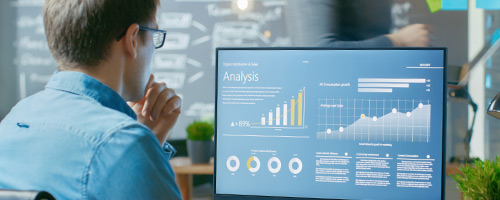What is Demand Planning?
Demand Planning is the process of forecasting demand across all channels for all products at all locations.
Demand Planning produces a demand plan which should specify which product quantities are required and when are these products will be needed at each location. A Demand Planning System (DPS) is a system for calculating these forecasts and can usually be configured to use a variety of forecasting methods, e.g. for volatile and non-volatile products.
Traditionally, the forecasting process has been very challenging as manufacturers often do not have real-time visibility to their customers’ demand. Further upstream, the uncertainty in demand and the forecast grows as each supplier makes their best estimate of demand with limited visibility into actual end-customer demand. Typically, forecasts are created using historical sales data, analyzing trends and looking at market research data. In today’s volatile markets, actual demand is highly variable and influenced by a host of factors, such as trade tariffs, weather patterns, global pandemics, and fast-changing consumer preferences, making demand much more difficult to forecast. This has led companies to apply new approaches based on artificial intelligence and machine learning, and has made agility and responsiveness much more important for global businesses.
One Network's Perspective on Demand Planning
Demand Planning and DPS are important, but they are not sufficient for a running an efficient supply chain. If the past is not a predictor of the future, then better to respond to changes in demand signals with the greatest agility possible. One Network’s NEO Platform enables network-wide visibility, so all companies have visibility to demand and can be truly customer-driven. It uses real-time consumption data shared with relevant parties, including suppliers, so that accurate demand can drive planning, production, and logistics across the supply chain.
This is accomplished by first generating a single, integrated forecast for all channels (e.g. physical and online retail) at the SKU/item/day level of detail. It then automatically adjusts this forecast as actual demand changes throughout the day, without introducing any nervousness into the chain. Finally, each adjustment in demand automatically is propagated as order forecasts to all trading partners and tiers across the entire supply chain, thereby optimizing replenishment, logistics, inventory, and production plans.
Paired with NEO intelligent agents, businesses can plan better, execute more efficiently, and collaborate and respond in unison with trading partners when demand shifts unexpectedly. This improves customer service levels while lowering costs for all trading partners.
Demand Planning Resources

Demand Planning & Replenishment
How to gain competitive advantage in eCommerce, home deliveries and in the store, with Demand Sensing, Autonomous Forecasting, and more.

Integrated Business Planning & Execution
The Integrated Business Planning solution suite provides powerful solutions for Sales & Operations Planning and Execution (S&OP), Business Continuity and Risk Management, and Sustainability.

Why Planning and Execution Are Not Two Different Things
Do planning and execution really need to be two separate applications? Is there a real business need underlying that separation? Or is it merely a limitation of today’s legacy software architectures?

